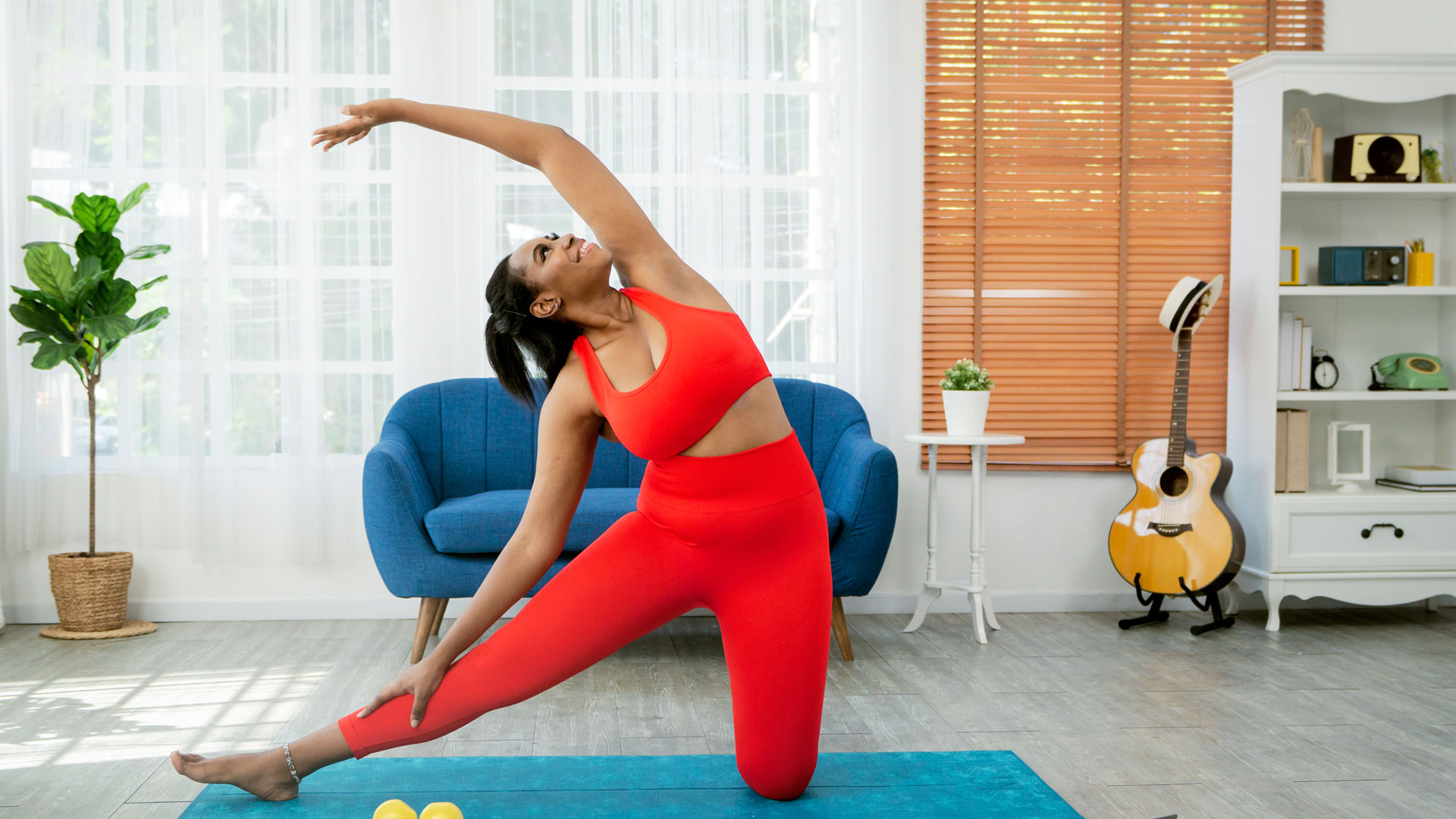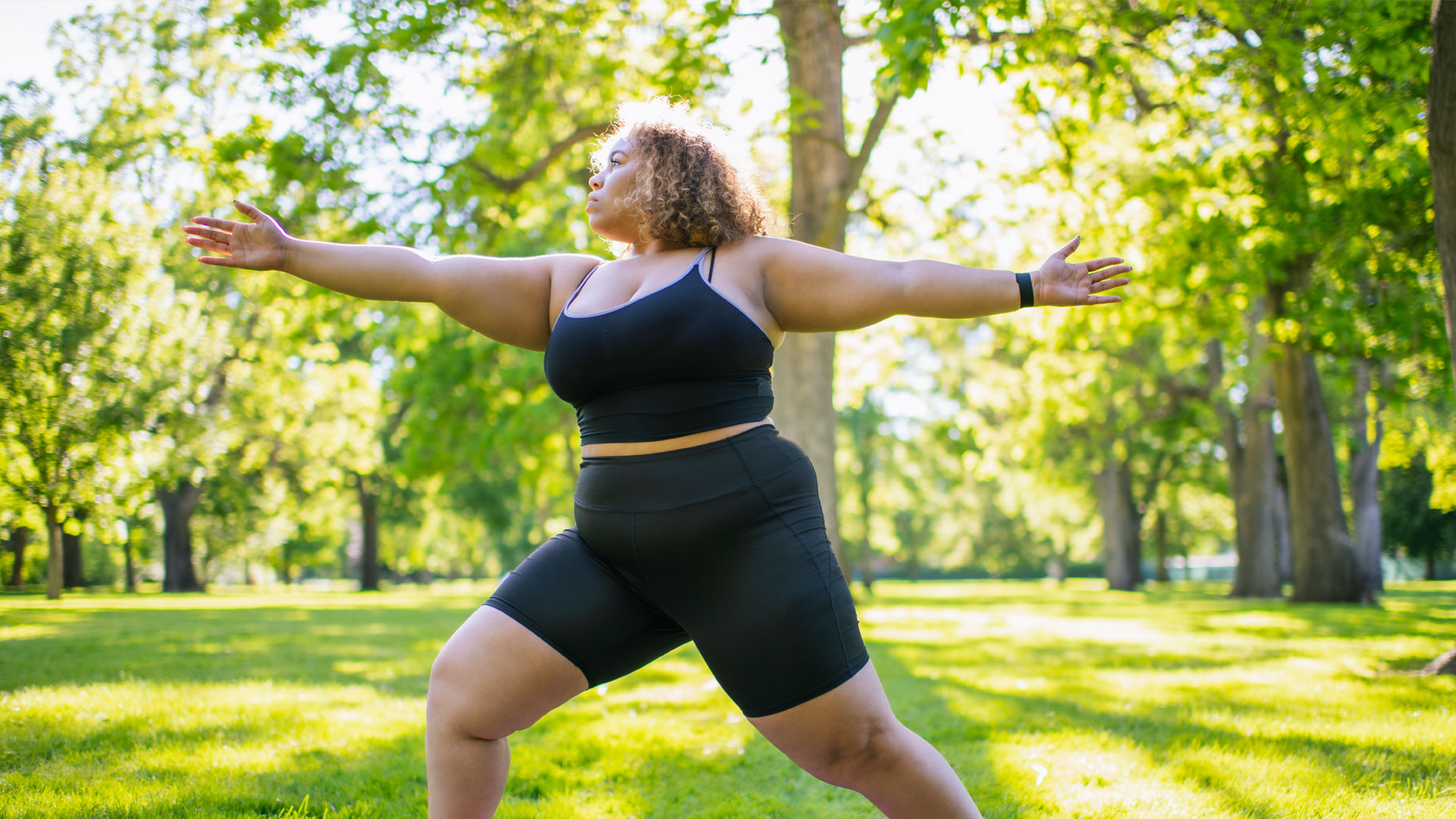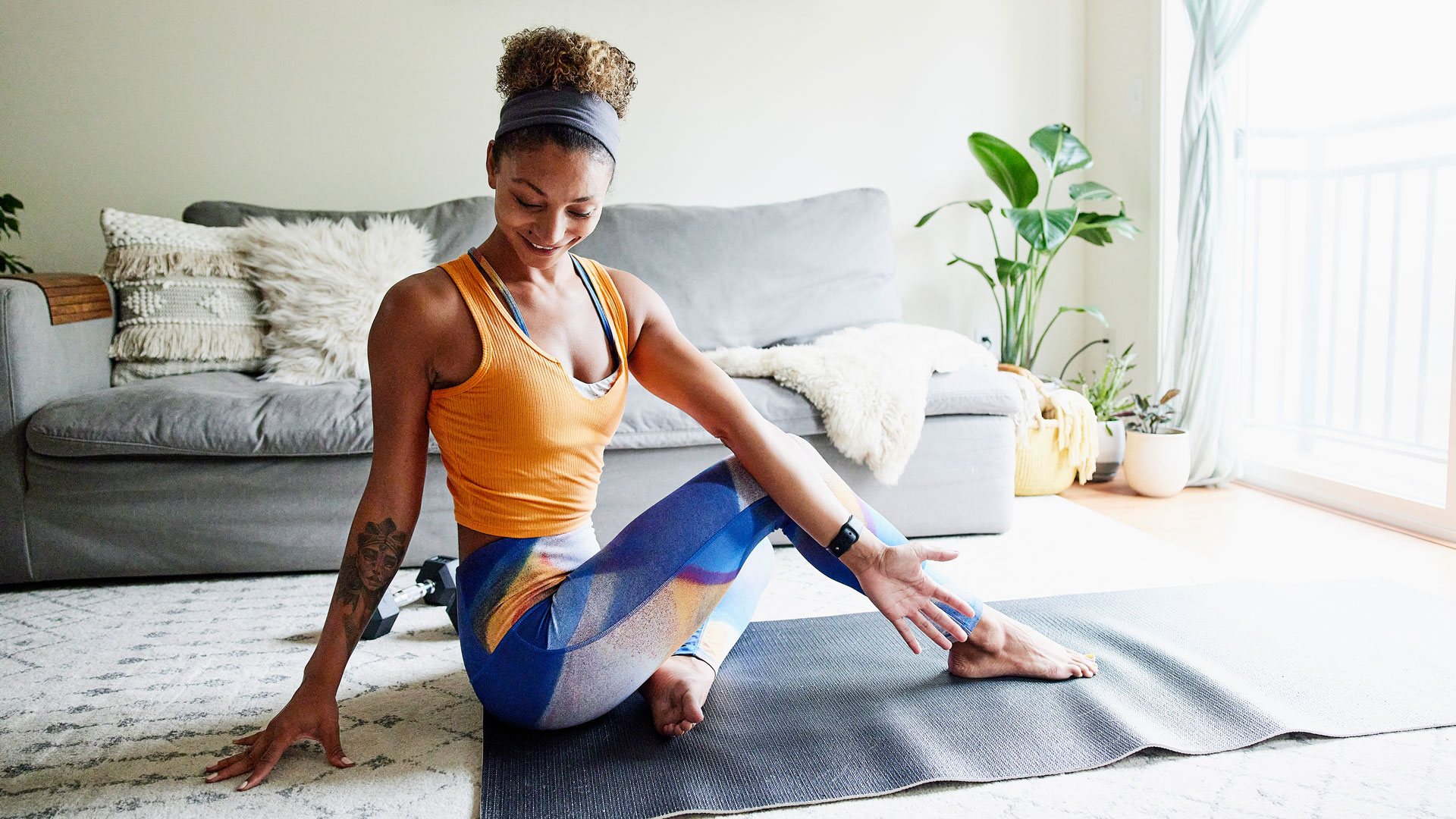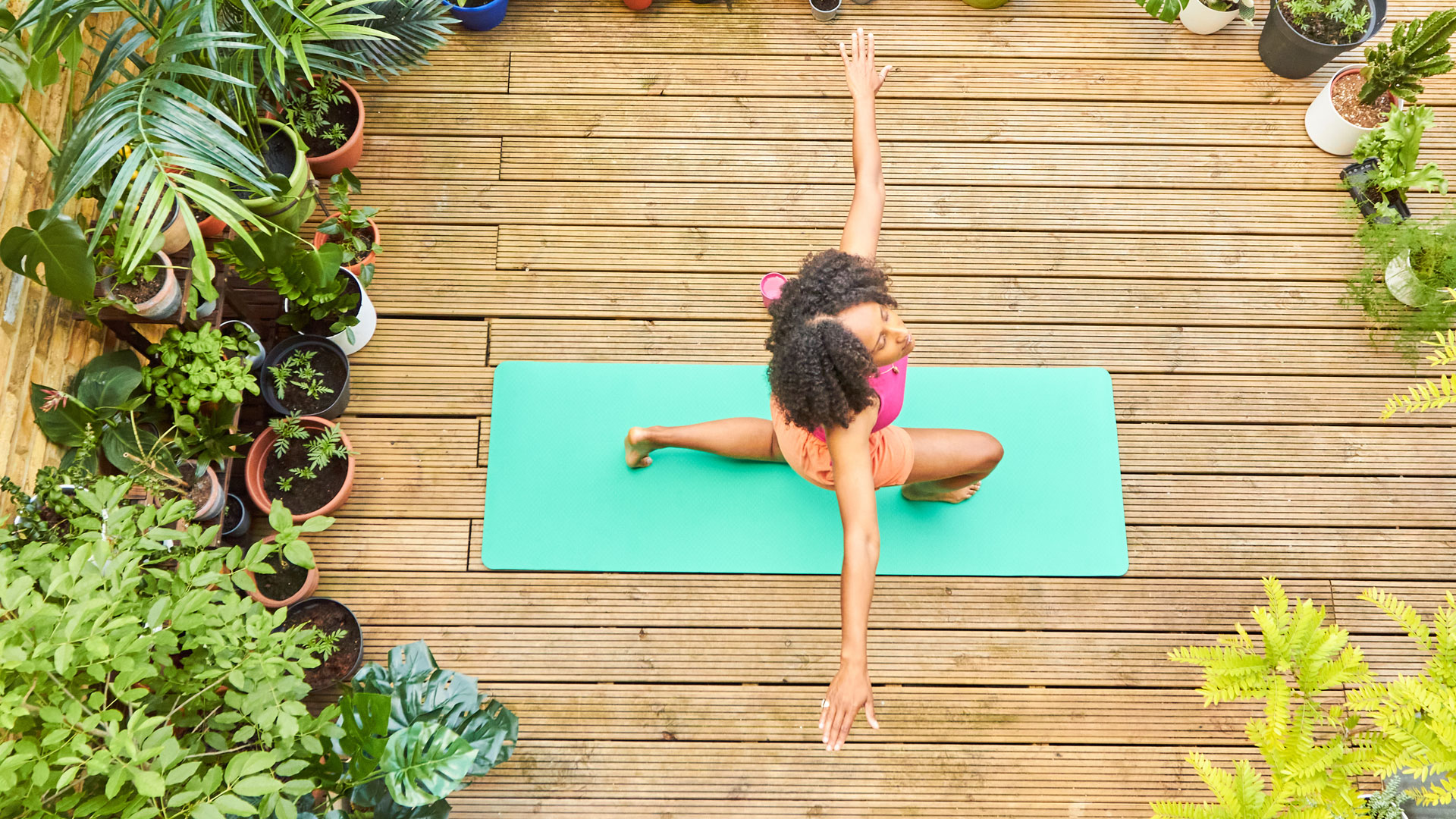How to be more flexible
Wondering how to be more flexible? Here’s everything you need to know, including stretches to try, and where to start


On a mission to find out how to be more flexible? Adding some form of stretching to your health and fitness regime is something we should all be doing. The good news is that stretching can be done anywhere and in a range of ways. There are moves you can do even when you’re sitting in a chair, or alternatively, you can push yourself that bit further by stretching with the best resistance bands. In fact, according to the American College of Sports Medicine, it’s a good idea to stretch each of the major muscle groups at least twice a week, for around 60 seconds per stretch.
But why is that? Stretching helps to improve range of motion, keep our muscles strong, and aid recovery times. And according to research published in the Journal of Exercise Rehabilitation, stretching can boost your exercise performance too, by “affording psychological stability, preparation, and confidence.”
You might already use a range of tools to help keep you nimble. Whether it’s the best foam rollers for post-workout massages or the best yoga mats to help you get your stretch on. But your journey in how to be more flexible doesn’t start and end there. To discover how being flexible can help the body, where to start and the best stretching exercises to try – keep scrolling.
How does flexibility help the body?

The importance of staying flexible is tenfold. As research published by Harvard University dictates, stretching keeps the body’s muscles strong, healthy, and supple. Which in turn helps us to maintain a good range of motion in our joints.
Without this, our muscles can shorten and become tight. Our body already works against us when we age. As the older we get, our muscles naturally become shorter and tighten. This in turn decreases your range of motion, which can more formally be known as muscular atrophy – a medical term for the loss of flexibility and range of movement. Muscular atrophy can stop us from doing everyday activities. This is why it’s so important to keep stretching to stay as flexible as possible as we get older.
But there’s more. Being flexible not only helps us continue to complete our everyday activities – whether it’s walking to the shops, performing gardening tasks, or bending down to put our shoes on. It can also help fitness fans avoid injury. A review published in Sports Medicine stated: “It is generally accepted that increasing the flexibility of a muscle-tendon unit promotes better performances and decreases the number of injuries.”
How to be more flexible: where to start
So, where should you start when it comes to increasing your flexibility? According to Beth Crivelli, lead yoga instructor at Sadhana Live, increasing flexibility is not an overnight job, but it doesn’t take hours every day either.
Get the Fit&Well Newsletter
Start your week with achievable workout ideas, health tips and wellbeing advice in your inbox.
Crivelli says: “My three top tips are: Find a practice that you enjoy and stick with it. Be realistic, set yourself manageable goals, even if it’s only 10 minutes a day, it will make a difference in just a few weeks. And finally, find ways to move more in your day-to-day life.
“For example, if you sit a lot take a 5-minute break every 40 minutes, stand up and walk, do some wrist and neck stretches at the desk, stand / sit in different positions, sit up straight, stand on one leg when chopping your vegetables, do some leg stretches when watching tv…basically be creative and find ways to insert movement into your life.”

How to be more flexible: exercises/stretches to try
1. Perform static stretches
Static stretches allow you to become more flexible over time – and science backs this up. According to research published in the Journal of Sports Science and Medicine, performing static stretches can improve your range of motion and guard against the effects of an aging body. As the name suggests, static stretches are performed when you hold one stretch in one position. Some examples include a hamstring stretch, glutes stretch, and a bicep stretch.
2. Try yoga
If you’ve not tried yoga before, now is the time. According to current research, conducted by the University of Illinois, yoga practice can be just as effective as stretching exercises like the ones we’ve listed above. This brilliant form of exercise can improve mobility, balance, and functional fitness.

Crivelli says: “Many yoga poses encourage muscles and other soft tissues around joints to lengthen whilst also building strength (through movement and static holds) that can support movement through our joints.
“In addition, yoga can reduce neuromuscular inhibition and can train the nervous system to communicate with muscles more efficiently and allow them to release and stretch. So starting a well-rounded yoga class or a practice that focuses on both strengthening and stretching our muscles is a great place to start. Practicing a class three times a week will bring about results in just three-four weeks.
“In general forward bends and folds will target the muscles at the back of the body and backbends will target the muscles in the front of the body and these are pretty much opposite movements!
“So there isn’t a stretch that will target all muscles but there are stretches that will target many of the muscles in a certain area of the body. For example, ragdoll pose will target many back body muscles from the hamstrings to the neck. It is important to move the body in all directions, maybe with a special focus on the areas that need it the most. What I suggest is practicing a well-rounded yoga class but if time is scarce then finding a routine or two (even just seven to 10 minutes each) of a few strengthening and stretching poses that feel right to you.”
Keep on challenging your flexibility with 7 foam roller exercises to ease muscle pain.
Becks is a freelance journalist and writer with more than 7 years of experience in the field. She writes health and lifestyle content for a range of titles including Live Science, Top Ten Reviews, Tom’s Guide, Stylist, The Independent, and more. She also ghostwrites for a number of Physiotherapists and Osteopaths.
Health has been a big part of Becks’ lifestyle since time began. When she’s not writing about the topic of health, she’s in the gym learning new compound exercises. And when she’s not in the gym, she’s most probably reading.